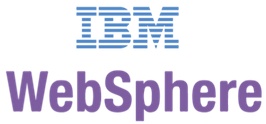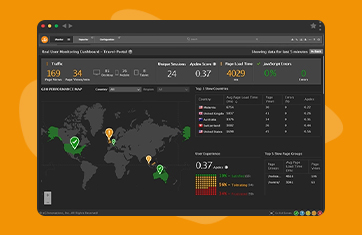IBM WebSphere
What is IBM WebSphere?
IBM WebSphere is a brand of proprietary enterprise software products that facilitate the development, deployment and management of applications. WebSphere is a platform for building scalable and secure applications and integrating applications with other applications.

IBM WebSphere is popular for its robust and scalable features, for its powerful integration capabilities that allow disparate applications to be connected and for its support of different communication protocols, data formats and standards. WebSphere also offers a cohesive environment for building and deploying applications as it not only includes an application server, but it also includes messaging technology, business process management and integration tools. WebSphere is also supported on many platforms including Windows, Linux, AIX, Solaris and so on.
What are the main products in the IBM WebSphere product family?
WebSphere includes a number of products and technologies that include:
- WebSphere Application Server (WAS): This is the core component of WebSphere, providing a runtime environment for Java-based enterprise applications. It supports various programming models, such as Java EE (Enterprise Edition) and Jakarta EE, and offers features like scalability, security, and high availability.
- IBM MQ: It is a messaging middleware that enables applications to communicate and exchange data asynchronously. It provides a reliable and secure messaging backbone for connecting applications and systems across different platforms.
- WebSphere Commerce: This product is designed for e-commerce applications. It offers out of the box capabilities for building and managing online stores, order management, customer relationship management (CRM), and personalized marketing.
- WebSphere Portal: This is a platform for building enterprise portals, which are web-based interfaces that aggregate and present information from various sources, such as applications, databases, and content repositories. WebSphere Portal provides features like content management, collaboration, and personalization.
- WebSphere Process Server: This component enables the modeling, execution, and monitoring of business processes. It supports the Business Process Execution Language (BPEL) standard and provides tools for designing and managing complex workflows.
- IBM Integration Bus (formerly WebSphere Message Broker): This is an enterprise service bus (ESB) that facilitates the integration of different applications and systems. It supports various communication protocols and data formats, enabling the exchange of messages between diverse environments.
Why is monitoring important for IBM WebSphere deployments?
IBM WebSphere products are used to support key business processes. Hence, any slowdown or unavailability can result in violation of SLAs and lost revenue for businesses. Hence, proactive monitoring is a must.
WebSphere includes several different products that have to work together. IT organizations need to get real-time insights into the performance of each of these technologies. At the same time, they need end-to-end visibility so they can understand how these technologies inter-relate with each other and when issues happen where is the root-cause.
What are some of the ways to monitor IBM WebSphere?
IBM Tivoli has a suite of products for monitoring WebSphere products. Tivoli is often very expensive and difficult to implement, requiring a lot of consulting hours to deploy it well. This is where modern monitoring and observability solutions like eG Enterprise help. eG Enterprise has out of the box integration with many WebSphere products.
eG Enterprise includes comprehensive monitoring for the WebSphere application server. Besides monitoring the underlying JVM, eG Enterprise also tracks the health of the WebSphere application server and its tag and follow technology can provide code-level visibility into the functioning of the Java applications deployed on WebSphere application server as well.
eG Enterprise also tracks the health of the messaging components. Availability, queue lengths, traffic levels to different channels are all tracked. Monitoring of IIB is also supported.
User experience for applications developed using WebSphere is also supported using a combination of real user monitoring and synthetic monitoring capabilities.
Learn more about IBM WebSphere application server monitoring capabilities included in eG Enterprise here: https://www.eginnovations.com/supported-technologies/websphere-monitoring


